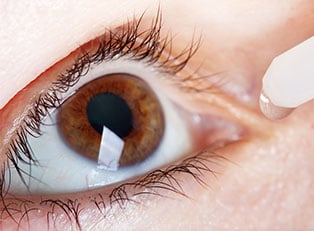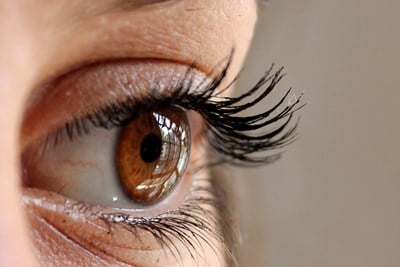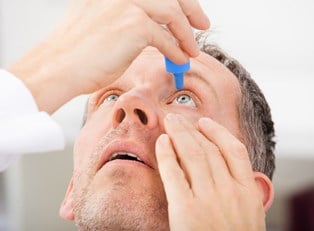For most people with occasional or mild dry eyes symptoms, treatment involves over-the-counter eyedrops, such as artificial tears, and other home remedies.
It's best to avoid eyedrops that reduce redness, however. If your dry eyes symptoms are persistent and more serious, your treatment options will depend on what's causing your dry eyes. Some conditions that cause dry eyes can be reversed or managed. Other treatments can improve your tear quality or stop your tears from quickly draining away from your eyes.
In some cases, treating an underlying health issue can help reverse dry eyes. For instance, if a medication is causing your dry eyes, your doctor may recommend a different medication that doesn't cause that side effect.
If you have an eyelid condition, such as an anatomic abnormality or a condition that makes it difficult to close your eye completely when you blink, your doctor may refer you to an eye surgeon who specializes in plastic surgery of the eyelids (oculoplastic surgeon).
If your signs and symptoms suggest an autoimmune condition, such as rheumatoid arthritis or Sjogren's syndrome, your doctor may refer you to a rheumatologist for evaluation.
"Cures"
Dry eyes can be caused by any number of things, including the environment, an underlying disease, or a side effect of medication. Because of this, finding a cure has proven difficult for researchers. There are currently no promising leads for preventing this condition, but they may soon be on the horizon, thanks to a study on tears from the National Science Foundation. Their research looks at the direction that tears travel across the eye when they are produced, and by examining “problem areas” where they have difficulty accumulating, it may one day be possible to redirect their flow in a more productive direction.
Medications
Prescriptions used to treat dry eyes include:
Antibiotics to reduce eyelid inflammation. If inflammation along the edge of your eyelids keeps the oil glands from secreting oil into your tears, your doctor may recommend antibiotics to reduce inflammation. Antibiotics can be administered as eyedrops or ointment, or they can be taken in pill form.
Prescription eyedrops to control cornea inflammation. Inflammation on the surface of your eyes may be controlled with prescription eyedrops that contain the immune-suppressing medication cyclosporine (Restasis) or that contain corticosteroids to control inflammation.
Prescription eye inserts that work like artificial tears. For people with moderate to severe dry eyes symptoms who can't use artificial tears, one option may be a tiny eye insert that looks like a clear grain of rice. Once a day, you place the hydroxypropyl cellulose (Lacrisert) insert between your lower eyelid and your eyeball. The insert dissolves slowly, releasing a substance that's used in eyedrops to lubricate your eye.
Treatments
Treatments that may be used include:
Closing your tear ducts to reduce tear loss. Your doctor may suggest treatment to keep your tears from leaving your eye too quickly. This can be done by partially or completely closing your tear ducts, which normally serve to drain tears away. Tear ducts can be plugged with tiny silicone plugs (punctal plugs) that conserve both your own tears and artificial tears you may add. Silicone plugs can be removed or left in. Or, tear ducts can be plugged with a procedure that uses heat. In a more permanent procedure called thermal cautery, your doctor numbs the area with an anesthetic and then applies a hot wire that shrinks the tissues of the drainage area and causes scarring, which closes the tear duct.
Covering your eyes with a special contact lens. People with severe dry eyes may opt for special contact lenses. These contact lenses help protect or shield the surface of your eyes, trapping moisture close to your eyes in order to relieve your dry eyes symptoms. Ask your eye doctor whether these special lenses, called bandage lenses or corneal shields, are an option for you.
Unblocking blocked oil glands. A new treatment called LipiFlo thermal pulsation helps clear blocked oil glands. During the treatment, a device that looks like an eyecup is placed over your eye. The device then delivers a gentle, warm massage to the lower eyelid. The procedure takes less than 15 minutes, and you can go home right afterward. Results usually begin within a few days. Because this is a new treatment, it may not yet be available everywhere.



